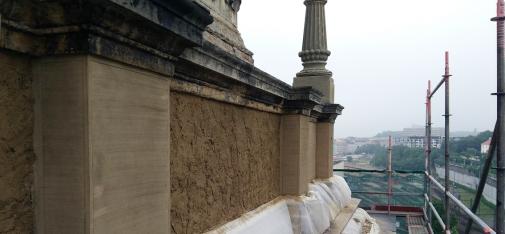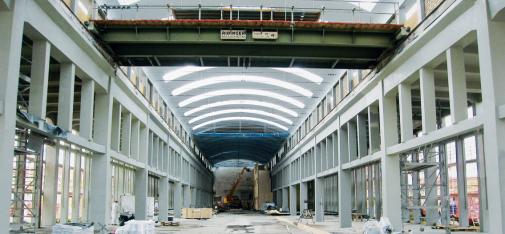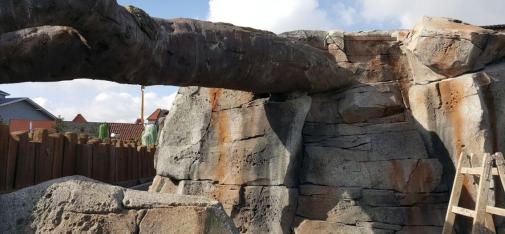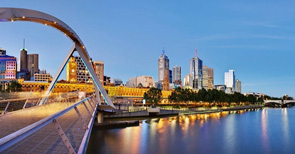-

Replica drift built at Zollern colliery
On the premises of the Zollern Colliery Museum in Dortmund, a “walk-in, hands-on mine” was opened to visitors in 2018. The surface of the drift tunnel was stabilised and modelled with products of the MC-RockMortar (formerly Oxal RM) family, the sculpting and repair mortars of MC.
Replica drift built at Zollern colliery
Dortmund - Deutschland
On the premises of the Zollern Colliery Museum in Dortmund, a “walk-in, hands-on mine” was opened to visitors in 2018. At the beginning of 2019, this exhibition, steeped in history, was expanded by the construction of a replica coal drift to make the visitor experience even more realistic. The surface of the drift tunnel was stabilised and modelled with products of the MC-RockMortar (formerly Oxal RM) family, the sculpting and repair mortars of MC.
Mining is integral to the heritage of the Ruhr region. The fact that coal is no longer being extracted from the area has changed nothing in that respect, with the era being kept alive by museums such as that of the Zollern colliery. The anthracite coal mine in the northwest of Dortmund, which was closed down in 1967, consisted of two pits that joined together underground. In a project that was completed in the summer of 2019, the former training mine of Westerholt colliery in Herten was rebuilt here in order to provide a particularly authentic insight into the everyday life of the miners.
A hands-on mining experience courtesy of MC-RockMortar
In addition to the usual information boards, there are also many “hands-on stations” in the training mine. In the middle of January 2019, the museum added another highlight within just a few days: a deceptively realistic coal drift recreated with MC-RockMortar. Projections and light give the impression of a long, deep tunnel – even though the actual training mine is located above ground. The idea is to give visitors an impression of what it was like to work in such dark, narrow drifts. Original sounds from the mining industry and a vibratory plate imitating the vibrations of coal mining further enhance the museum experience.

© MC-Bauchemie 2025
Versatile high performer
The project, supervised by Andreas Hoppenrath of the LWL Industriemuseum organisation, was carried out by BETON.ROCKS from Halle/Saale. The BETON.ROCKS team led by Giorgi Gugunava consists of sculptors, designers, classically trained craftsmen and machine technicians. It has created numerous artificial worlds in the past, ranging from simple rocky landscapes to detailed reproductions of old cultural sites and witnesses of days gone by.
The team has often worked with MC’s microsilica-modified MC-RockMortar sculpting and repair mortars, which include the fine-grained MC-RockMortar L (formerly Oxal RM-L) for particularly intricate designs and the coarser-grained, higher compressive strength MC-RockMortar H (formerly Oxal RM-H) and MC-RockMortar HS (formerly Oxal RM-H HS) mortars. MC-RockMortar was also the product of first choice for the Zollern colliery project. Offering excellent application properties and resistance, these special single-component mortars can be applied both by hand and by wet spraying. The mortars are ideal for the delicate sculpting and modelling of lifelike rock, stone or wooden surfaces. They are therefore often used for the artificial depiction of natural worlds, e.g. in zoos or amusement parks.
Deceptively realistic
At the Zollern colliery, too, the highest demands were placed not only on the creativity of the sculptors and craftsmen but also on the material. Initially, creating the black, shiny coal surface of the simulated drift was the biggest challenge. Thanks to MC-RockMortar, the end result was deceptively realistic to the delight of the museum operators and visitors alike.
-
Name
Replica drift built at Zollern colliery
-
Country
Dortmund - Deutschland, 2019
-
Categories
-
Products
RELATED CONTENT
-
News
Click here to go to our News section.
-
Magazine
Get our latest issues of our customer and employee magazine MC aktiv.
-
Downloads
Find all relevant datasheets of our products as well as brochures of our company, Fields of Expertise and product categories here.
-
References
Click here to get to our library with reference projects for all types of application.
-
Careers
Click here to go to MC Career.
-
Contact
Click here to go to our Contact section.



